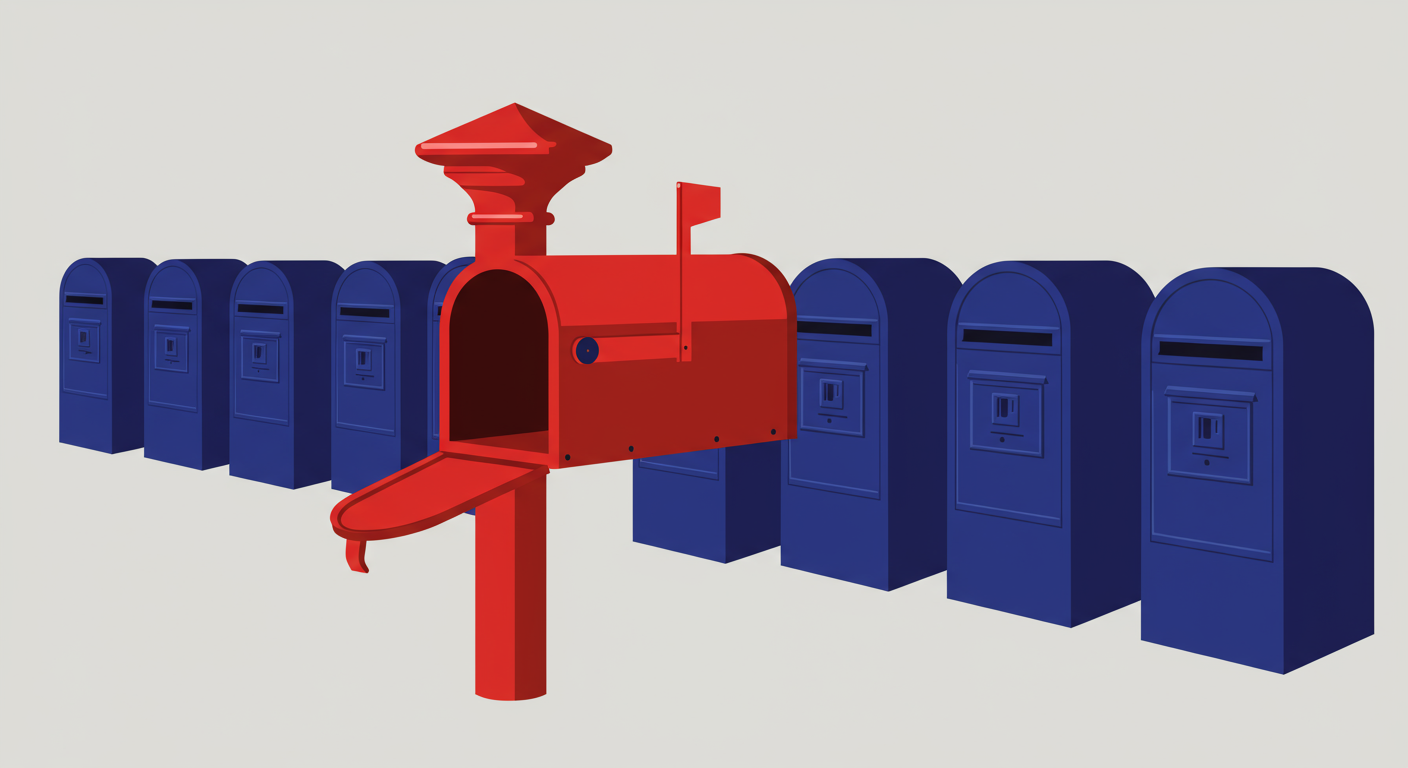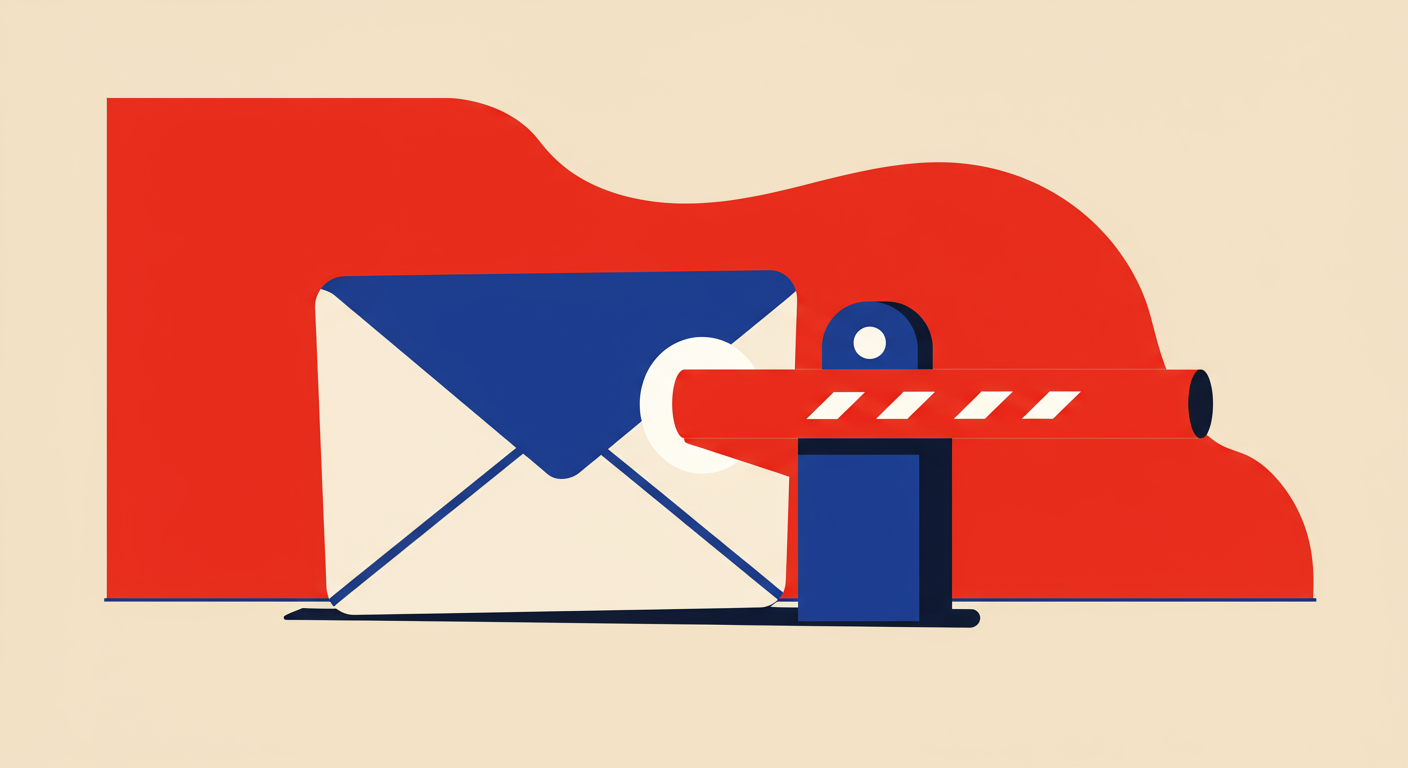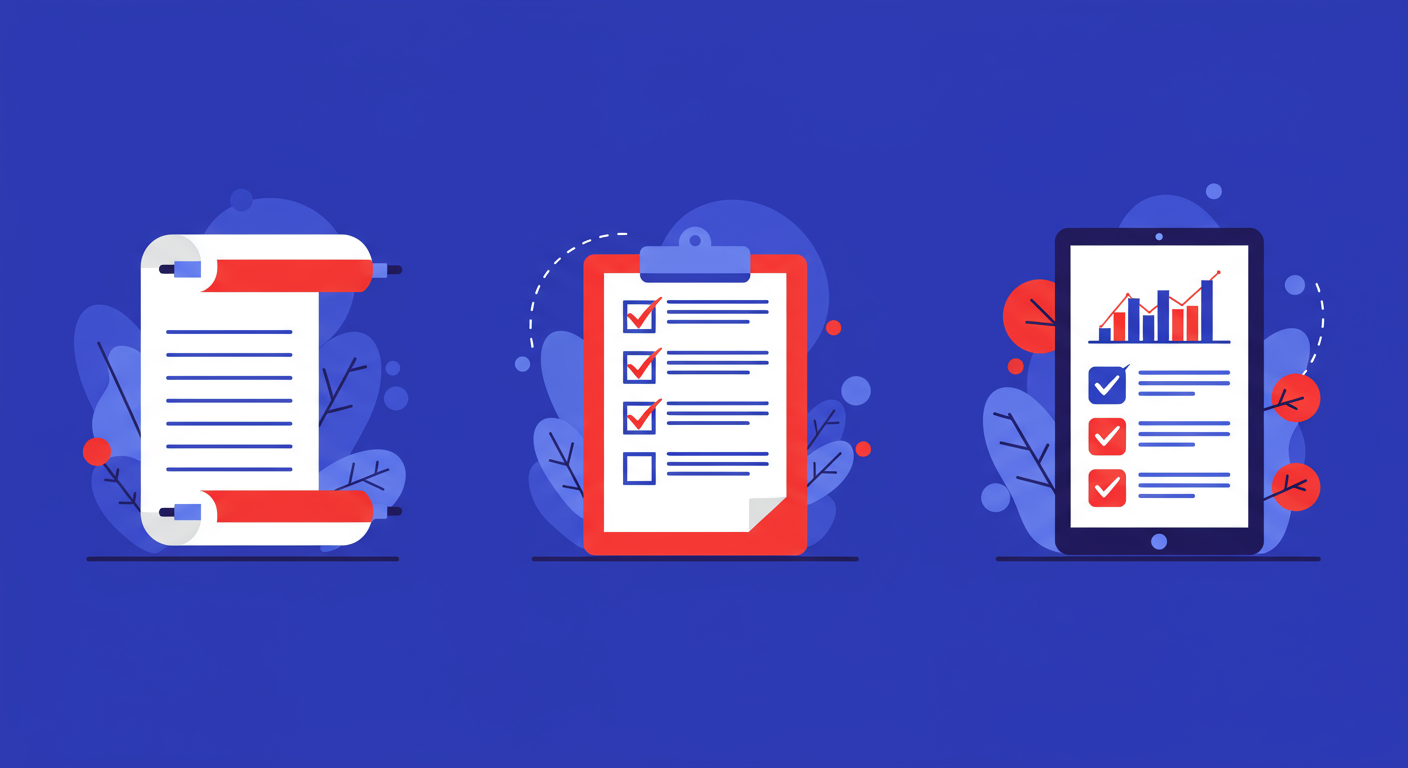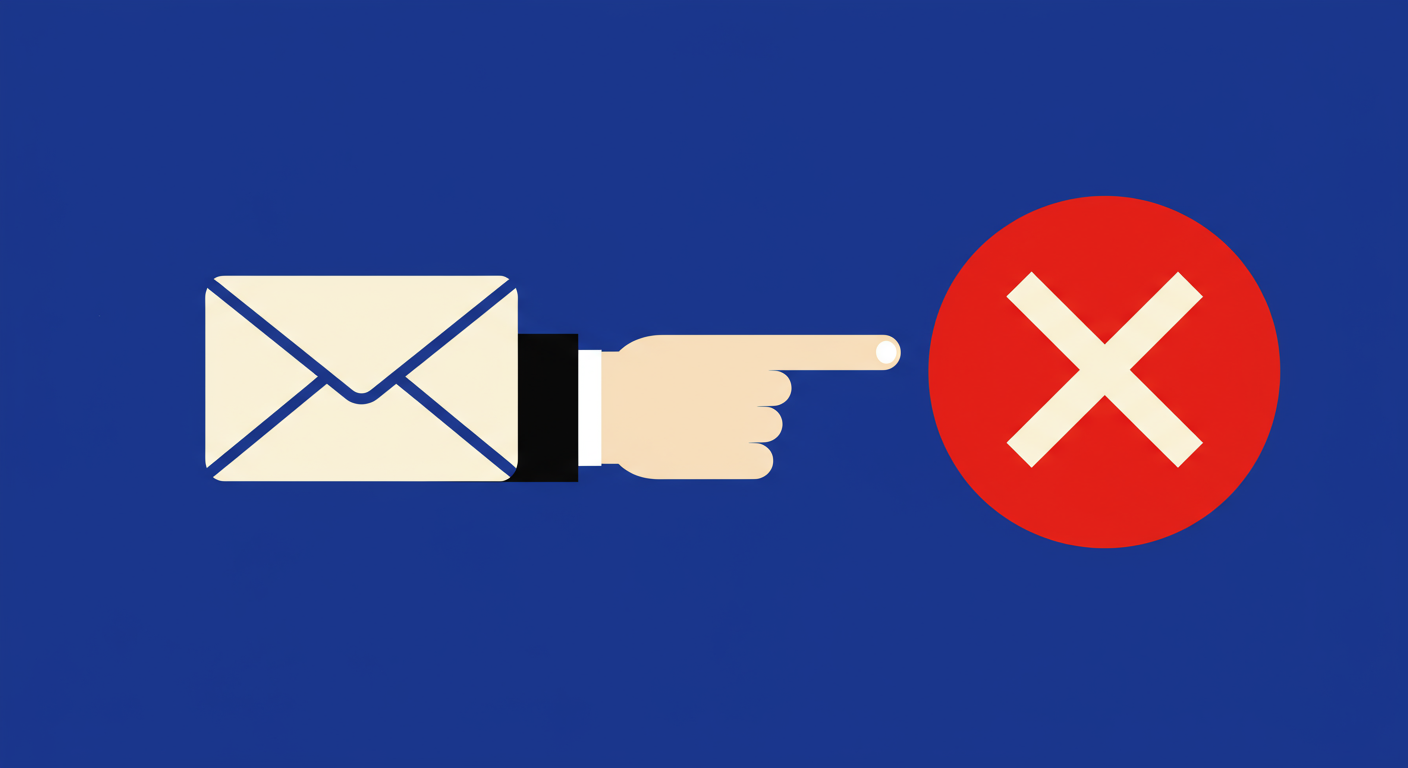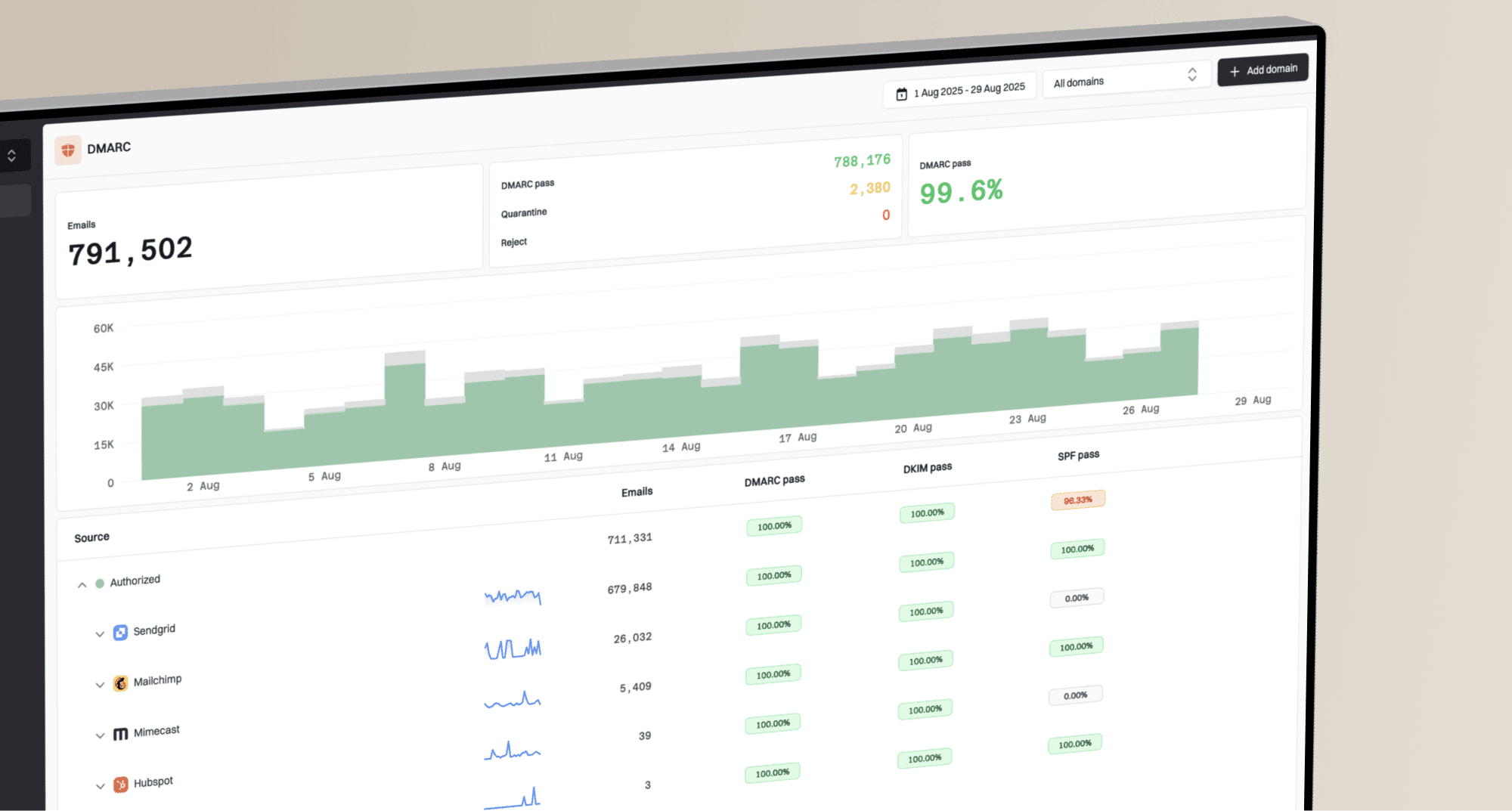How your email address ends up on a blacklist



Have you ever sent an important email campaign, only to find out that a huge portion of your messages never even reached the inbox? It’s a deeply frustrating experience, and when it happens, one of the first things I check for is a potential listing on an email blacklist.
So, what exactly is an email blacklist (often called a blocklist)? In simple terms, it's a real-time database of IP addresses and domains that have been flagged for sending spam. Internet Service Providers (ISPs) and mailbox providers like Gmail, Outlook, and Yahoo use these lists as a reference to filter out unwanted mail and protect their users from junk.
Getting on one of these blacklists can cripple your email marketing efforts, impacting everything from customer communication to sales outreach. The key to staying off them is to first understand the specific actions and missteps that land you there in the first place. Once you know the causes, prevention becomes much, much easier.
The most direct path to a blocklist is through spam complaints. This happens when a recipient receives your email and manually clicks the “this is spam” button. It’s a powerful, direct signal to their email provider that your message was unwanted. A few complaints here and there are normal, but a consistent pattern is a huge red flag.
You don't need a massive number of complaints to get into trouble. Mailbox providers and blacklist operators monitor complaint rates closely. Even a rate as low as 0.1%, or one complaint for every 1,000 emails sent, can be enough to damage your sender reputation and trigger a listing. These thresholds are a key reason why your deliverability can suddenly drop off a cliff.
This is precisely why sending emails only to people who have explicitly opted-in is non-negotiable for good deliverability. If someone signed up for your newsletter, they are far less likely to complain than someone whose email was scraped from a website or pulled from a purchased list. Permission is the foundation of a healthy sender-recipient relationship.
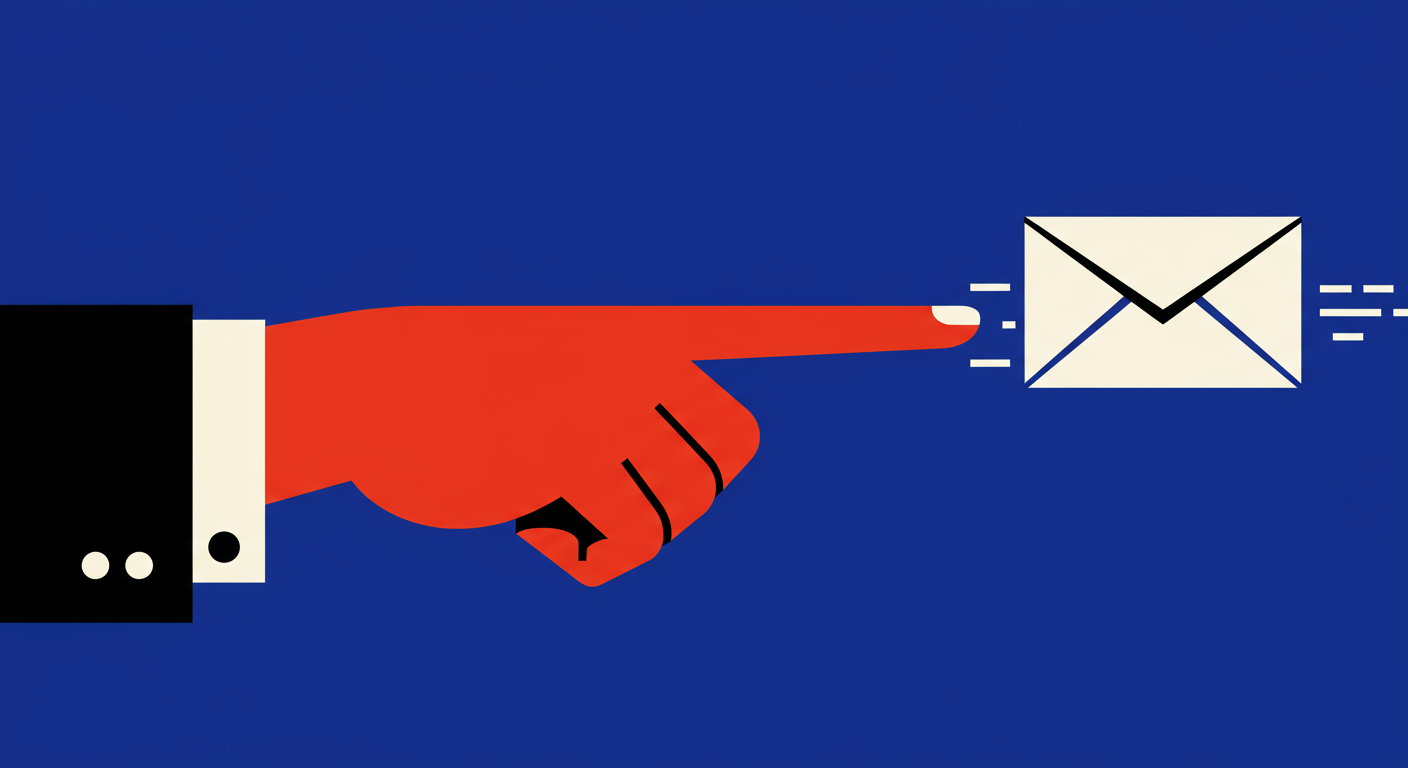
Beyond active complaints, the overall quality of your email list plays a massive role. The practice of maintaining a clean and valid list of recipients is known as list hygiene, and neglecting it is a common reason for getting blacklisted.
One of the biggest indicators of poor list hygiene is a high hard bounce rate. A hard bounce occurs when you send an email to an address that is invalid, closed, or doesn't exist. To mailbox providers, a high bounce rate suggests you aren't collecting emails through legitimate means and may have purchased or scraped your list. This makes you look like a spammer, even if your intentions are good.
Even more dangerous are spam traps. These are email addresses used by blocklist operators and ISPs to identify spammers. Some are "pristine" spam traps, which are email addresses that have never been used publicly and could only have been obtained by scraping. Others are "recycled" spam traps, which are old, abandoned email addresses that have been reactivated to catch senders who aren't cleaning their lists. Hitting just one of these can land your domain or IP on a blacklist almost instantly.
While who you send to is critical, what you send also matters. Email filters have become incredibly sophisticated and analyze the content of your messages for spam-like characteristics. Using gimmicky subject lines in all caps, including too many exclamation points, using URL shorteners, or linking to disreputable websites can all contribute to a poor content score and raise flags.
Your sending behavior is also under scrutiny. If a new domain or IP address with no sending history suddenly starts blasting out thousands of emails a day, it looks highly suspicious to mailbox providers. This is why a proper 'IP warm-up' is crucial. You need to start with a low volume of emails to your most engaged recipients and gradually increase the volume over days and weeks. This helps you build a positive sending reputation over time.
Finally, a common but often overlooked reason for being blacklisted is a security breach. If your email account or sending server is compromised, hackers can use it to send out large volumes of spam without your knowledge. Your domain's reputation gets trashed, and you're left to deal with the fallout. This highlights the importance of strong passwords and securing your sending infrastructure.
 Spamhaus
Spamhaus 0Spam
0Spam Cisco
Cisco NoSolicitado
NoSolicitado URIBL
URIBL abuse.ro
abuse.ro ALPHANET
ALPHANET Anonmails
Anonmails Ascams
Ascams BLOCKEDSERVERS
BLOCKEDSERVERS Calivent Networks
Calivent Networks EFnet
EFnet
 JustSpam
JustSpam Kempt.net
Kempt.net
 NordSpam
NordSpam RV-SOFT Technology
RV-SOFT Technology
 Scientific Spam
Scientific Spam Spamikaze
Spamikaze SpamRATS
SpamRATS SPFBL
SPFBL Suomispam
Suomispam System 5 Hosting
System 5 Hosting Team Cymru
Team Cymru Validity
Validity www.blocklist.de Fail2Ban-Reporting Service
www.blocklist.de Fail2Ban-Reporting Service ZapBL
ZapBL 2stepback.dk
2stepback.dk Fayntic Services
Fayntic Services ORB UK
ORB UK technoirc.org
technoirc.org TechTheft
TechTheft Spamhaus
Spamhaus 0Spam
0Spam Cisco
Cisco NoSolicitado
NoSolicitado URIBL
URIBL abuse.ro
abuse.ro ALPHANET
ALPHANET Anonmails
Anonmails Ascams
Ascams BLOCKEDSERVERS
BLOCKEDSERVERS Calivent Networks
Calivent Networks EFnet
EFnet
 JustSpam
JustSpam Kempt.net
Kempt.net
 NordSpam
NordSpam RV-SOFT Technology
RV-SOFT Technology
 Scientific Spam
Scientific Spam Spamikaze
Spamikaze SpamRATS
SpamRATS SPFBL
SPFBL Suomispam
Suomispam System 5 Hosting
System 5 Hosting Team Cymru
Team Cymru Validity
Validity www.blocklist.de Fail2Ban-Reporting Service
www.blocklist.de Fail2Ban-Reporting Service ZapBL
ZapBL 2stepback.dk
2stepback.dk Fayntic Services
Fayntic Services ORB UK
ORB UK technoirc.org
technoirc.org TechTheft
TechTheft Spamhaus
Spamhaus 0Spam
0Spam Cisco
Cisco NoSolicitado
NoSolicitado URIBL
URIBL abuse.ro
abuse.ro ALPHANET
ALPHANET Anonmails
Anonmails Ascams
Ascams BLOCKEDSERVERS
BLOCKEDSERVERS Calivent Networks
Calivent Networks EFnet
EFnet
 JustSpam
JustSpam Kempt.net
Kempt.net
 NordSpam
NordSpam RV-SOFT Technology
RV-SOFT Technology
 Scientific Spam
Scientific Spam Spamikaze
Spamikaze SpamRATS
SpamRATS SPFBL
SPFBL Suomispam
Suomispam System 5 Hosting
System 5 Hosting Team Cymru
Team Cymru Validity
Validity www.blocklist.de Fail2Ban-Reporting Service
www.blocklist.de Fail2Ban-Reporting Service ZapBL
ZapBL 2stepback.dk
2stepback.dk Fayntic Services
Fayntic Services ORB UK
ORB UK technoirc.org
technoirc.org TechTheft
TechTheft Spamhaus
Spamhaus 0Spam
0Spam Cisco
Cisco NoSolicitado
NoSolicitado URIBL
URIBL abuse.ro
abuse.ro ALPHANET
ALPHANET Anonmails
Anonmails Ascams
Ascams BLOCKEDSERVERS
BLOCKEDSERVERS Calivent Networks
Calivent Networks EFnet
EFnet
 JustSpam
JustSpam Kempt.net
Kempt.net
 NordSpam
NordSpam RV-SOFT Technology
RV-SOFT Technology
 Scientific Spam
Scientific Spam Spamikaze
Spamikaze SpamRATS
SpamRATS SPFBL
SPFBL Suomispam
Suomispam System 5 Hosting
System 5 Hosting Team Cymru
Team Cymru Validity
Validity www.blocklist.de Fail2Ban-Reporting Service
www.blocklist.de Fail2Ban-Reporting Service ZapBL
ZapBL 2stepback.dk
2stepback.dk Fayntic Services
Fayntic Services ORB UK
ORB UK technoirc.org
technoirc.org TechTheft
TechTheft Spamhaus
Spamhaus 0Spam
0Spam Cisco
Cisco NoSolicitado
NoSolicitado URIBL
URIBL abuse.ro
abuse.ro ALPHANET
ALPHANET Anonmails
Anonmails Ascams
Ascams BLOCKEDSERVERS
BLOCKEDSERVERS Calivent Networks
Calivent Networks EFnet
EFnet
 JustSpam
JustSpam Kempt.net
Kempt.net
 NordSpam
NordSpam RV-SOFT Technology
RV-SOFT Technology
 Scientific Spam
Scientific Spam Spamikaze
Spamikaze SpamRATS
SpamRATS SPFBL
SPFBL Suomispam
Suomispam System 5 Hosting
System 5 Hosting Team Cymru
Team Cymru Validity
Validity www.blocklist.de Fail2Ban-Reporting Service
www.blocklist.de Fail2Ban-Reporting Service ZapBL
ZapBL 2stepback.dk
2stepback.dk Fayntic Services
Fayntic Services ORB UK
ORB UK technoirc.org
technoirc.org TechTheft
TechTheftIf you suspect you've been blacklisted, the first step is to confirm it. Your delivery rates dropping or an increase in bounce messages with mentions of "blocked" or "rejected" are strong clues. You need to check your domain and sending IP addresses against major blocklists to understand where the problem lies. Continuous monitoring is the best way to catch these issues before they become a catastrophe.
Once you’ve identified which blacklist you're on, you need to begin the removal process. Most blacklist operators, like Spamhaus or Barracuda, have a public website with a delisting procedure. Typically, you'll have to submit a request to be removed. However, they will not remove you if you haven't fixed the root cause of the problem. If you were listed for spam complaints, you must address your list quality and sending practices before even thinking about requesting delisting.
Ultimately, avoiding email blacklists isn't about a one-time fix. It’s about adopting a long-term strategy centered on responsible sending. By focusing on permission, maintaining excellent list hygiene, sending valuable content, and monitoring your sender reputation proactively, you can ensure your emails consistently reach the inbox. This transforms deliverability from a source of stress into a competitive advantage.


